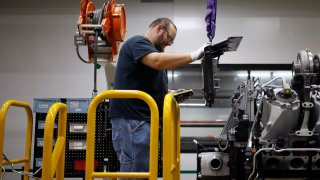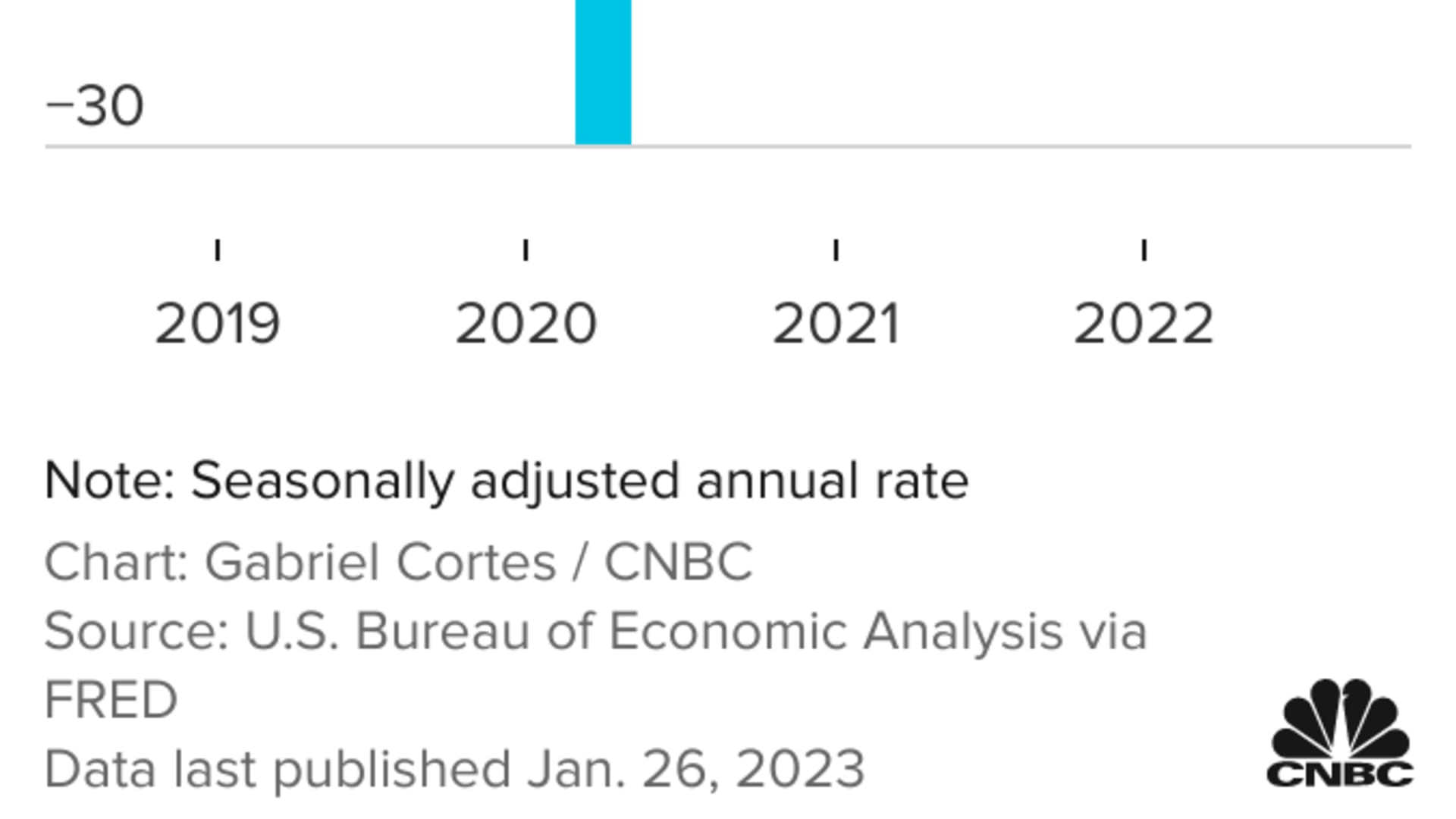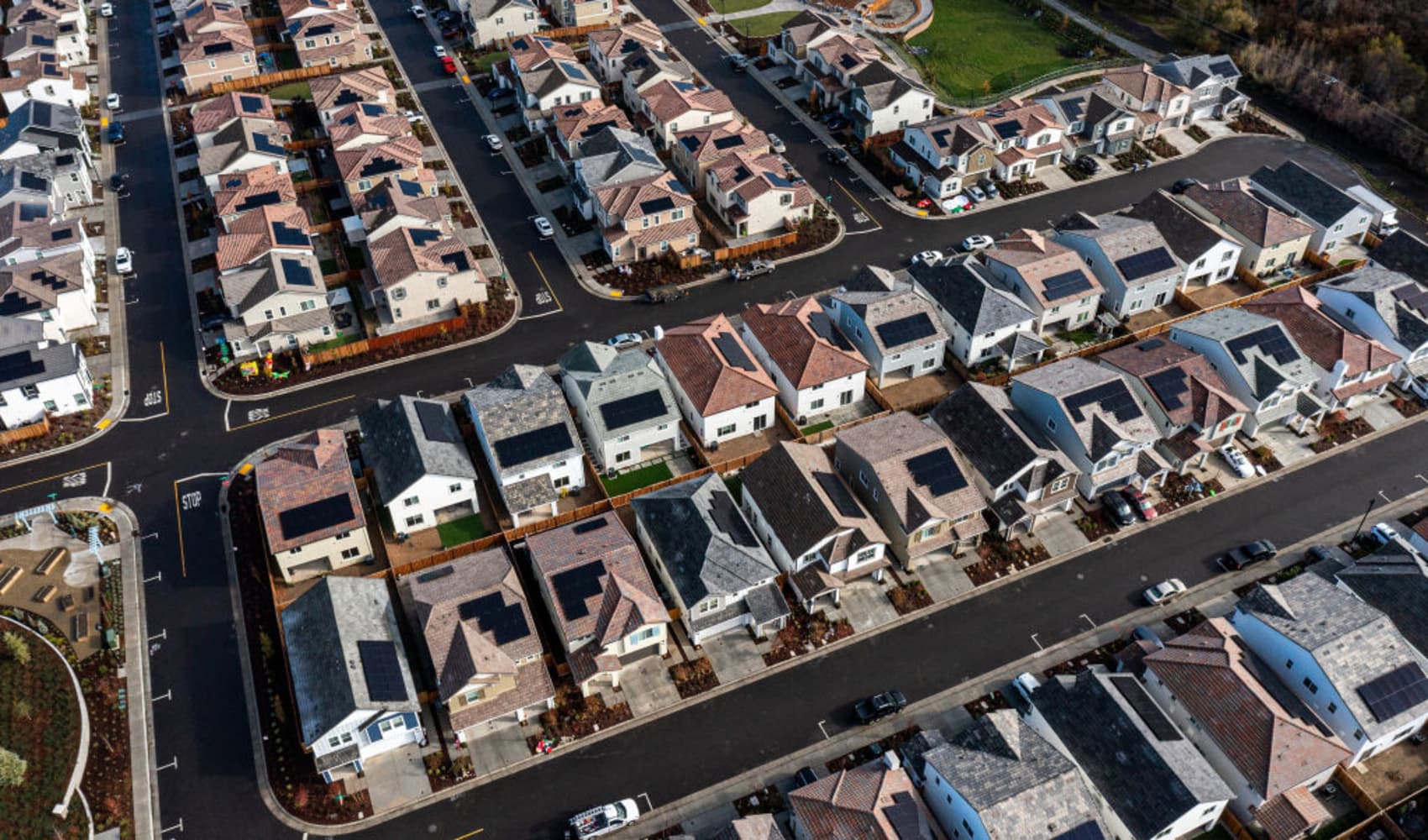
- Gross domestic product rose at a 2.9% annualized pace in the fourth quarter, slightly better than expected.
- Consumer spending weakened from the previous period but remained positive.
- A sharp slide in housing helped pull down GDP, while boosts in government spending and private investment aided growth.
- Jobless claims fell last week while durable goods orders increased sharply in December, but mainly due to demand for aircraft.
The U.S. economy finished 2022 in solid shape even as questions persist over whether growth will turn negative in the year ahead.
Fourth-quarter gross domestic product, the sum of all goods and services produced for the October-to-December period, rose at a 2.9% annualized pace, the Commerce Department reported Thursday. Economists surveyed by Dow Jones had expected a reading of 2.8%.
Get a weekly recap of the latest San Francisco Bay Area housing news. Sign up for NBC Bay Area’s Housing Deconstructed newsletter.
The growth rate was slightly slower than the 3.2% pace in the third quarter.

Stocks turned mixed following the report while Treasury yields were mostly higher.
Money Report
Consumer spending, which accounts for about 68% of GDP, increased 2.1% for the period, down slightly from 2.3% in the previous period but still positive.
Inflation readings moved considerably lower to end the year after hitting 41-year highs in the summer. The personal consumption expenditures price index increased 3.2%, in line with expectations but down sharply from 4.8% in the third quarter. Excluding food and energy, the chain-weighted index rose 3.9%, down from 4.7%.
While the inflation numbers indicated price increases are receding, they remain well above the Federal Reserve's 2% target.
Along with the boost from consumers, increases in private inventory investment, government spending and nonresidential fixed investment helped lift the GDP number.
A 26.7% plunge in residential fixed investment, reflecting a sharp slide in housing, served as a drag on the growth number, as did a 1.3% decline in exports. The housing drop subtracted about 1.3 percentage points from the headline GDP number.
Federal government spending rose 6.2%, due largely to an 11.2% surge on nondefense outlays, while state and local expenditures were up 2.3%. Government spending in total added 0.64 percentage points to GDP.
Inventory increases also played a significant role, adding nearly 1.5 percentage points.
"The mix of growth was discouraging, and the monthly data suggest the economy lost momentum as the fourth quarter went on," wrote Andrew Hunter, senior U.S. economist for Capital Economics. "We still expect the lagged impact of the surge in interest rates to push the economy into a mild recession in the first half of this year."
The report caps off a volatile year for the economy.
Following a 2021 that saw GDP rise at its strongest pace since 1984, the first two quarters of 2022 started off with negative growth, matching a commonly held definition of a recession. However, a resilient consumer and strong labor market helped growth turn positive in the final two quarters and gave hope for 2023.
"Just as the economy wasn't as weak in the first half of 2022 as GDP reports suggested, it's also not as strong as the Q4 GDP release would indicate," said Jim Baird, chief investment officer at Plante Moran Financial Advisors. "Held aloft by resilient consumer spending, the economy expanded at a solid pace late last year, but remains vulnerable to a more pronounced slowdown in the coming quarters."
A separate economic report Thursday highlighted a strong, tight labor market. Weekly jobless claims fell by 6,000, down to 186,000 for the lowest reading since April 2022 and well below the 205,000 Dow Jones estimate.
Orders for long-lasting goods also were much better than expected, rising 5.6% for December, compared with the 2.4% estimate. However, orders fell 0.1% when excluding transportation as demand for Boeing passenger planes helped drive the headline number.
Despite the fairly strong economic data, most economists think a recession is a strong possibility this year.
A series of aggressive Fed interest rate increases aimed at taming runaway inflation are expected to come to roost this year. The Fed raised its benchmark borrowing rate by 4.25 percentage points since March 2022 to its highest rate since late 2007. Rate hikes generally operate on lags, meaning their real effect may not be felt until the time ahead.
Markets see a near certainty that the Fed is going enact another quarter percentage point increase at its meeting next week and likely follow that up with one more similar-sized hike in March.
Some sectors of the economy have shown signs of recession even though overall growth has been positive. Housing in particular has been a laggard, with building permits down 30% in December from a year ago and starts down 22%.
Corporate profit reports from the fourth quarter also are signaling a potential earnings recession. With nearly 20% of the S&P 500 companies reporting, earnings are tracking at a loss of 3%, even with revenue growing 4.1%, according to Refinitiv.
Consumer spending also is showing signs of weakening, with retail sales down 1.1% in December.






